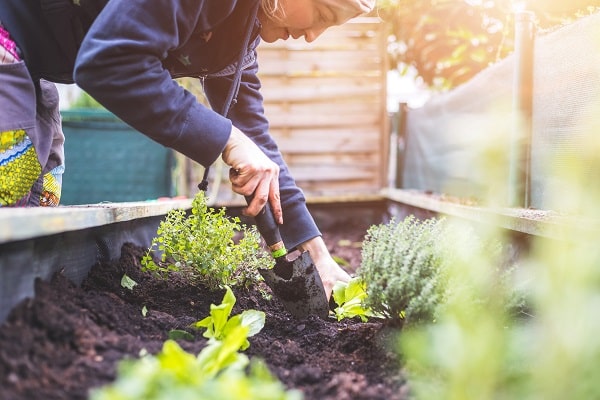Home / Information & advice / Topsoil & compost / Using topsoil / The benefits of raised beds
If you want to add an extra dimension to your garden, raised beds make an attractive design feature with many practical uses. Raising even a small section adds visual interest to any size of outdoor space whether you want to break the monotony of a single level or create an eye-catching centre piece or display. Have a look at the parks and public gardens around you to see how often professional gardeners make use of raised beds with some spectacular results.
A raised bed is simply an enclosed area of soil or compost that is higher than the rest of the garden. There are lots of different materials you can use which mean a raised bed can be built to suit all budgets and can be either a seasonal or a permanent feature of your outside space. They can be used to grow anything from perennials and alpines to soft fruit, produce or herbs and one of the biggest benefits is that a raised bed can be used to grow plants that the rest of your garden just can’t support due to soil type or conditions.
Aside from being a simple and eye-catching way to add a touch of professional design to your garden, creating a raised bed can have many practical benefits.

Raised beds can add a useful and decorative touch to add to your outdoor space, whether it’s a domestic garden or even an allotment. Many householders who want to add an area for produce or would like to grow soft fruit in their back garden find a separate raised bed fits in better visually than an isolated vegetable patch in the middle of their flowering plants or next to the lawn.
Another advantage to raised beds is the ability to import suitable topsoil. It gives you the opportunity to ensure that you are using safe, fertile product that is fit for purpose. The Rolawn range of topsoils is carefully blended to suit the intended task.
What’s more, as an environmentally friendly supplier, Rolawn uses responsible sourcing protocols that help to limit both our own and your impact on the environment.
Once you’ve built your raised bed, what you grow in it is only limited by your imagination and a few practical considerations.
If you plan to grow vegetables then it’s a good idea to ask other gardeners about their experiences with different varieties in raised beds as opposed to ordinary beds.
Many keen allotment gardeners use raised beds successfully for a salad bed or for root crops such as carrots and parsnips because of the deep fine soil but don’t find them so useful for growing potatoes.
Photo – Harrod Horticultural Raised Beds